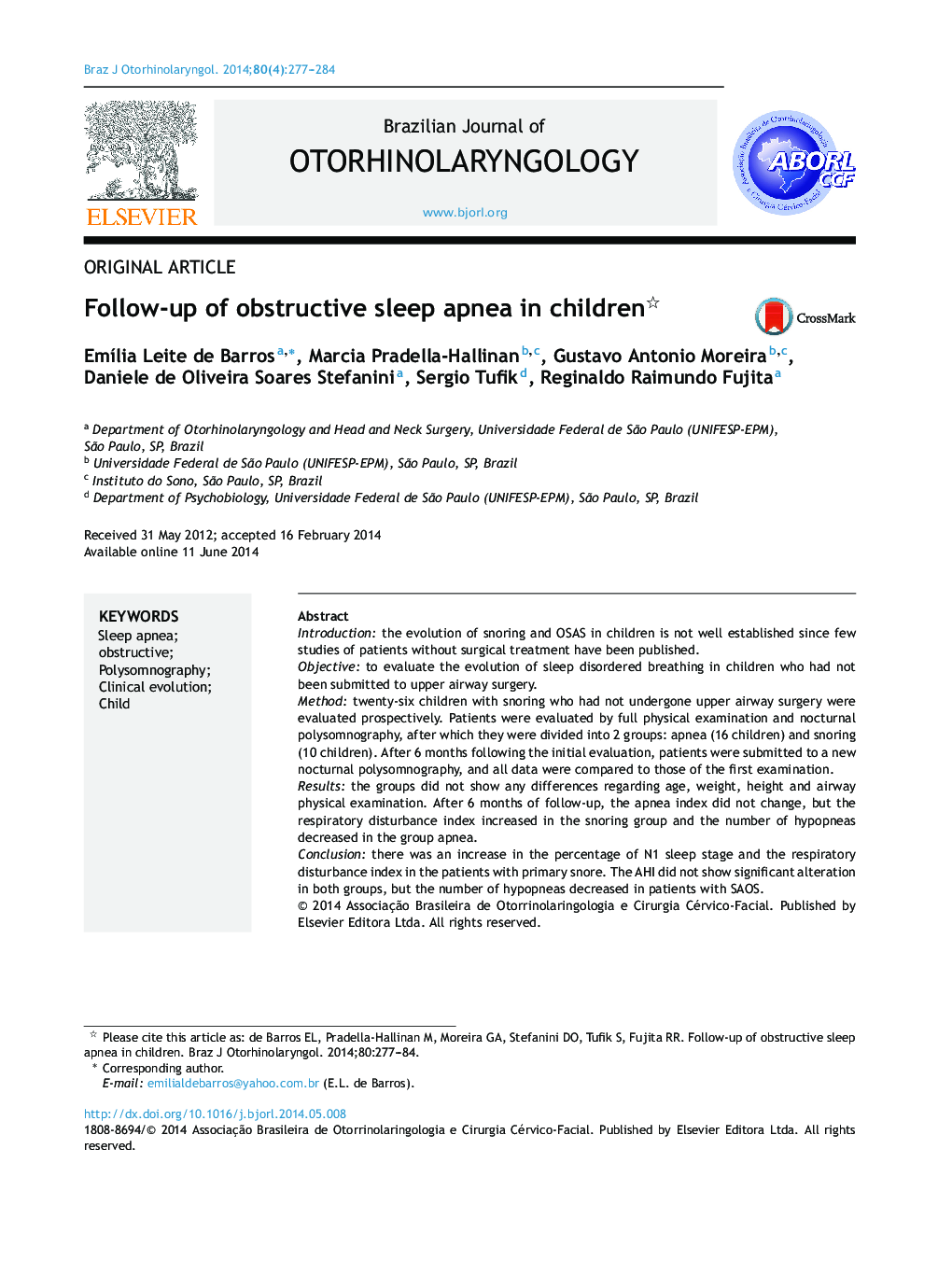| Article ID | Journal | Published Year | Pages | File Type |
|---|---|---|---|---|
| 4106343 | Brazilian Journal of Otorhinolaryngology | 2014 | 8 Pages |
Introductionthe evolution of snoring and OSAS in children is not well established since few studies of patients without surgical treatment have been published.Objectiveto evaluate the evolution of sleep disordered breathing in children who had not been submitted to upper airway surgery.Methodtwenty-six children with snoring who had not undergone upper airway surgery were evaluated prospectively. Patients were evaluated by full physical examination and nocturnal polysomnography, after which they were divided into 2 groups: apnea (16 children) and snoring (10 children). After 6 months following the initial evaluation, patients were submitted to a new nocturnal polysomnography, and all data were compared to those of the first examination.Resultsthe groups did not show any differences regarding age, weight, height and airway physical examination. After 6 months of follow-up, the apnea index did not change, but the respiratory disturbance index increased in the snoring group and the number of hypopneas decreased in the group apnea.Conclusionthere was an increase in the percentage of N1 sleep stage and the respiratory disturbance index in the patients with primary snore. The AHI did not show significant alteration in both groups, but the number of hypopneas decreased in patients with SAOS.
ResumoIntroduçãoa evolução do ronco e da síndrome da apneia/hipoapneia obstrutiva do sono (SAOS) na infância ainda não está bem estabelecida e poucos estudos desses pacientes sem o tratamento cirúrgico foram publicados.Objetivoavaliar a evolução da apneia e do ronco primário em crianças que não foram submetidas a cirurgia das vias aéreas superiores.Métodosforam avaliadas prospectivamente 26 crianças com ronco que não haviam sido submetidas a tratamento cirúrgico. Todas foram submetidas a exame físico, nasofibroscopia e polissonografia, a partir dos quais foram divididos em dois grupos: SAOS (16 crianças) e ronco (10 crianças). Após 6 meses da avaliação inicial, os exames foram repetidos, e os dados encontrados foram comparados.Resultadosos grupos não apresentaram diferença entre si comparando idade, peso, altura e exame físico. Quando comparamos os resultados das duas polissonografias, houve um aumento da porcentagem do estágio do sono N1 no grupo ronco. O índice de apneia/hipoapnéeia (IAH) não apresentou alteração em ambos os grupos, o índice de distúrbios respiratórios (IDR) aumentou no grupo ronco, e o número de hipopneias diminuiu no grupo SAOS.Conclusãohouve aumento da porcentagem do estágio 1 do sono não-REM e do IDR nos pacientes com ronco primário; o IAH não apresentou alteração significante; o número de hipoapneias diminuiu nos pacientes com SAOS.
